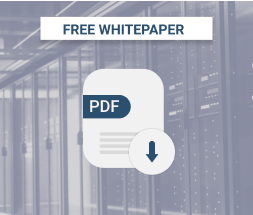Microsoft Azure and Rackspace are both major cloud computing providers with an international presence. What are the key differences between Azure and Rackspace? How does Rackspace pricing compare to Azure pricing? Which features does the Rackspace cloud offer that are not available from Azure, and vice versa?
Read this article to find the answers.
Table of Contents
Azure and Rackspace Instance Pricing
Cloud pricing is one of the first factors that most organizations weigh when choosing a cloud provider.
Drawing a direct comparison between Azure and Rackspace pricing is not possible because both companies offer different types of services. However, as a basic illustration of the differences between Azure and Rackspace pricing, consider the following.
According to the Rackspace price calculator, a Windows-based general-purpose virtual server instance with 1 CPU, 2 gigabytes of RAM and 32 gigabytes of storage would cost $114.52 for 730 hours of monthly usage. (There is no bandwidth factored into this calculation, and it’s based on Rackspace’s managed support option, which is the most basic support option available.)
In contrast, an Azure Windows D1 instance with 1 CPU core, 3.5 gigabytes of RAM and 32 gigabytes of disk storage would cost $97.09 based on 730 hours of usage. (This calculation also doesn’t have bandwidth factored in, and it includes the most basic Azure support option.)
Those two figures are comparable. The Azure instance is somewhat less expensive and includes more RAM, but Rackspace pricing reflects the greater level of support that the company offers through its default service plan. It’s also important to note that although we’ve chosen comparable instance types for this comparison, the virtual CPUs are not identical; the Rackspace instance may offer more compute power.
Note, too, that Rackspace charges a minimum flat service charge of $50 for all cloud instance types using its Managed Infrastructure support plan, which is the minimal level of support that you can choose. (You can’t opt not to have a support plan.) With this plan, you get on-call support and recommendations for best practices. The minimum charge is $500 if you use the extended support plan, which includes system administration, maintenance, and troubleshooting by Rackspace staff. Because of these minimum charges, Rackspace pricing will almost always be higher than Azure pricing for small workloads.
Azure and Rackspace Pricing for Cloud Storage
It’s also helpful to compare Rackspace vs. Azure cloud storage costs.
On Azure, 100 gigabytes of block storage using Blob, Azure's primary storage service, costs $6 per month with a general-purpose V2 account. Rackspace offers 100 gigabytes of cloud storage for $10 per month. (Both figures are based on the most basic support plans available.)
Here again, Rackspace pricing for cloud storage is the more expensive option. However, the Rackspace plan includes more extensive technical support, which helps to explain the pricing difference.
Instance Types
Azure provides significantly more instance options and categories than Rackspace.
Rackspace offers 17 types of Linux-based instances and 16 Windows-based instances. They are organized into four categories:
- General Purpose
- Compute Optimized
- I/O Optimized
- Memory-Optimized
Rackspace also offers Windows instance types with built-in SQL servers, as well as Vyatta Router instances, which can be useful if you are setting up the network infrastructure.
Azure offers a much longer list of instance types, including Windows and Linux-based options. The exact number of instances available varies depending on which region you select (for more on Azure regions, see below), but as an example, the West U.S. 2 region provides more than 90 generic Windows-based instances alone.
Azure also supports more instance categories. In addition to the Rackspace instance types listed above, Azure provides the following instance types:
- Storage Optimized
- GPU
- High-Performance Computing
Data Center Locations and Regions
Rackspace data centers are spread across six regions. They cover North America, Western Europe, Australia and the Hong Kong region of China.
Azure offers a much larger number of regions. Azure currently has a presence on all continents except Africa, where it plans to create new data centers soon.
For geographic breadth, Azure tops Rackspace. On the other hand, both cloud providers offer several data centers within North America, so the differences between Rackspace and Azure may not matter as much to users focused on that market.
Cloud Redundancy
Azure offers four redundancy options to help minimize the risk of downtime. You can choose to replicate your data within the same data center, across zonal data centers within the same region, or across geographically separated regions.
These options are called Locally Redundant Storage (LRS), Zone-Redundant Storage (ZRS) and Geo-Redundant Storage (GRS), respectively. GRS storage can be replicated in a read-only mode - Read-Access Geo-Redundant Storage (RA-GRS). Learn more about redundancy in different Azure storage types:
Further reading Azure Redundancy Options
While Rackspace says that its infrastructure has redundancy built-in, it doesn't offer users the ability to make data redundant within the same region or across multiple regions.
Rackspace and Azure APIs
Rackspace and Azure both provide APIs for accessing hosted services. Because Azure’s service offerings are more extensive, its APIs are also much broader.
Azure offers more hosted services than Rackspace. In addition to standard compute and storage services, Azure includes:
- a Docker container service
- serverless computing
- Hadoop and Spark services
- and much more
Most of these services can be controlled using Azure’s REST API.
Although Rackspace’s service offerings are more limited, the company does provide APIs for accessing them. For example, the Rackspace Cloud Files API provides an API for interacting with the Rackspace Cloud Files storage service. For controlling Rackspace virtual servers, which are based on OpenStack, Rackspace offers a Cloud Servers API, which is based on the core OpenStack API but provides additional features.
Technical Support
Perhaps the most significant difference between Azure and Rackspace is the level of technical support that each company provides.
Rackspace pricing includes two support levels, whose costs start respectively at $50 and $500 per month: Managed Infrastructure and Managed Operations. Both options include 24x7 support by phone or ticket. Rackspace’s promise of “fanatical support” is a key component of its marketing strategy and image.
Azure’s support plans are more limited in scope. The most simple paid plan called Developer, which costs $29 per month, provides only email access to support engineers during business hours.
More extensive Azure support is available but at significantly higher prices. To get live technical support via phone and access to architecture planning, for example, you’d need to purchase Azure’s Professional Direct service plan for $1000 per month. Rackspace offers a similar level of support for rates that start at half that price.
The bottom line: If you plan to set up and manage your cloud resources yourself, and need only basic support via community forums and documentation, Azure is the most cost-effective option. If you seek detailed, ongoing support from humans, Rackspace is a better choice in most cases.
Note that you can also purchase management services and support from Rackspace for Azure resources, too. This means Rackspace support staff offer similar types of assistance for managing Azure resources as they do for Rackspace resources. In this respect, Azure and Rackspace complement each other, rather than competing.
Conclusion: Rackspace vs Azure Similarities and Differences
In conclusion, the following are the main similarities between Azure and Rackspace:
- Both provide Linux and Windows-based compute instances.
- Both offer cloud storage services.
- Both provide strong data center coverage in North America.
- Both offer APIs for managing cloud-based resources.
The key differences between Azure and Rackspace include:
- Rackspace’s default technical support plan is more extensive.
- For areas outside of North America, Azure has broader data center coverage.
- Azure offers a much larger list of cloud services.
- Azure provides a longer list of instance types and categories.
- Azure provides redundant data storage as an option.
- Rackspace offers router-based instances, in addition to standard operating system instances.
Further reading Rackspace vs. AWS: Can Rackspace Match AWS for Cloud Servers?





